Bringing Reality to the Spiritual Life (Part 2)
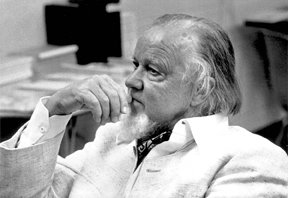 Francis Schaeffer wrote True Spirituality to address the sense of unreality that pervades the faith of modern Christians. Schaeffer was a philosopher, not a storyteller, and readers who are unaccustomed to his dense, abstract writing style may find this classic book hard to digest. In this series of articles, I will try to unpack and explain the major ideas.
Francis Schaeffer wrote True Spirituality to address the sense of unreality that pervades the faith of modern Christians. Schaeffer was a philosopher, not a storyteller, and readers who are unaccustomed to his dense, abstract writing style may find this classic book hard to digest. In this series of articles, I will try to unpack and explain the major ideas.
This installment focuses on Chapter 1, where Schaeffer discusses rules of Christian behavior. When the implications of the gospel are reduced to outward behaviors, our relationship with God becomes superficial and trite. True spirituality is not found in any set of rules. Nor is it found in setting aside rules.
Divisions in the Church, Part III
 In my two previous posts, Why Do We Have Divisions? and Divisions in the Church, Part II, I discussed why and how divisions occur in the church. In this final article, I would like to suggest that there are two common underlying factors that lead to conflicts and divisions: a lack of trust and respect, and inequality. I will conclude with some practical suggestions based on biblical principles for conflict resolution in the church.
In my two previous posts, Why Do We Have Divisions? and Divisions in the Church, Part II, I discussed why and how divisions occur in the church. In this final article, I would like to suggest that there are two common underlying factors that lead to conflicts and divisions: a lack of trust and respect, and inequality. I will conclude with some practical suggestions based on biblical principles for conflict resolution in the church.
Trust and respect. In Part II I listed sixteen sources of conflict. Are there common underlying factors? I believe so. Trust and respect are the glue that binds people together in friendship. Any fellowship or friendship will weaken if there is disrespect and/or a lack of trust between people. Many of the sixteen listed in Part II communicate disrespect or send the message “I don’t trust you.” If a husband disrespects his wife, or if a wife does not trust her husband, the marriage will weaken. The same will happen within relationships in the church.
Christ is Risen!
 Christ is risen, Christ is living,
Christ is risen, Christ is living,
dry your tears, be unafraid!
Death and darkness could not hold him,
nor the tomb in which he lay.
Do not look among the dead for
one who lives for evermore;
tell the world that Christ is risen,
make it known he goes before.
I Will Awaken the Dawn
 My heart is steadfast, O God;
My heart is steadfast, O God;
I will sing and make music with all my soul.
Awake, harp and lyre!
I will awaken the dawn.
I will praise you, O LORD, among the nations;
I will sing of you among the peoples.
For great is your love, higher than the heavens;
your faithfulness reaches to the skies.
Be exalted, O God, above the heavens,
and let your glory be over all the earth.
— from Psalm 8, of David
This is the Night
 This is the Night,
This is the Night,
Which throughout the world
Frees all who believe in Christ
From the vices of their time-shackled existence,
From the lightless dungeon of sin,
And restores them to grace: unites them to holiness.
This is the Night
In which Christ broke the chains of death
And rose in radiant victory
From the pit of Hades.
— Ancient hymn of the Easter vigil, author unknown
He Descended into Hades
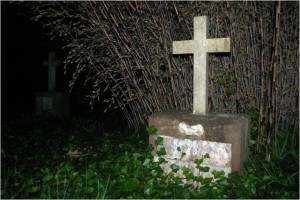 Many of us recite the Apostles’ Creed during our Sunday worship services to profess our faith and to affirm our membership in the universal Body of Christ. But we are puzzled by that short statement in the middle of the Creed, “He descended into Hades.” Where did it come from? What does it mean?
Many of us recite the Apostles’ Creed during our Sunday worship services to profess our faith and to affirm our membership in the universal Body of Christ. But we are puzzled by that short statement in the middle of the Creed, “He descended into Hades.” Where did it come from? What does it mean?
Some Protestants object to this statement. They remove it from the creed or remain silent during that part.
Behold the Lamb!
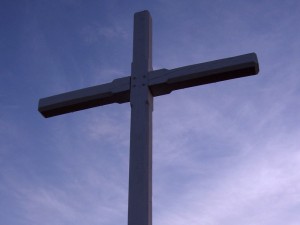 The death of Jesus is intimately connected with the Jewish feast of Passover.
The death of Jesus is intimately connected with the Jewish feast of Passover.
The Seder, the traditional meal eaten by Jews at sundown on the first day of Passover, recalls the events that brought God’s people out from slavery in Egypt. The Last Supper that Jesus shared with his disciples on the night before his death was a Seder. Jesus kept many of the traditions associated with this sacred meal. But he also made significant changes, introducing new elements to show his disciples that God was about to do something astounding. The disciples were on the verge of witnessing a new and greater exodus that would change them and their world forever.
The Sower (Part 3)
 As I hope I made clear in part two of this series, my preferred way of reading the parable of the sower uses Level 2 (the parable in the narrative context of the gospel) liberally and Level 3 (the parable in the context of Scripture as a whole) more cautiously. I acknowledge that there are benefits to reading a parable using Level 1 (in isolation from its narrative context), or Levels 4-6 (in its cultural context, in the context of Christian theology, in the context of truth in general). But on their own, they either fail to give us enough direction on how to interpret the parable (Level 1) or gives us too many possible directions, potentially leading to interpretive paralysis and despair (Levels 4-6). When the parable of the sower is read in its narrative context, the meaning becomes clear, and in turn it clarifies what is going on in Jesus’ ministry as recounted by Mark in his gospel. The kingdom of God is near. It is being established through the sowing of the word by Jesus. In the people who hear, accept and act accordingly (bear fruit), it will grow up and produce fruit magnificently. So we need to consider carefully how we hear.
As I hope I made clear in part two of this series, my preferred way of reading the parable of the sower uses Level 2 (the parable in the narrative context of the gospel) liberally and Level 3 (the parable in the context of Scripture as a whole) more cautiously. I acknowledge that there are benefits to reading a parable using Level 1 (in isolation from its narrative context), or Levels 4-6 (in its cultural context, in the context of Christian theology, in the context of truth in general). But on their own, they either fail to give us enough direction on how to interpret the parable (Level 1) or gives us too many possible directions, potentially leading to interpretive paralysis and despair (Levels 4-6). When the parable of the sower is read in its narrative context, the meaning becomes clear, and in turn it clarifies what is going on in Jesus’ ministry as recounted by Mark in his gospel. The kingdom of God is near. It is being established through the sowing of the word by Jesus. In the people who hear, accept and act accordingly (bear fruit), it will grow up and produce fruit magnificently. So we need to consider carefully how we hear.
In part two I did not discuss an important facet of the interpretation of the sower parable: namely, the ambiguity concerning whether it is the word or the people who are sown. If you look carefully at verses 14-20, sometimes the seed that is sown is the word (14-15) and sometimes it is the people (16,18,20). What might be the significance of this? Was Mark just being sloppy?
The Sower (Part 2)
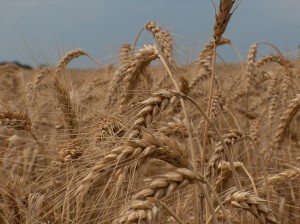 In my last installment, I gave a brief introduction to the parables of Jesus in the gospels, and laid out a framework of “levels of meaning” that I claimed can useful contribute to our reading and understanding the parables. In the second part of this series I will demonstrate what I’m talking about by showing how it applies to the parable of the sower.
In my last installment, I gave a brief introduction to the parables of Jesus in the gospels, and laid out a framework of “levels of meaning” that I claimed can useful contribute to our reading and understanding the parables. In the second part of this series I will demonstrate what I’m talking about by showing how it applies to the parable of the sower.
I chose to discuss the parable of the sower because it is the “parable of parables” or the “master parable.” In Mark 4:13 Jesus says to his disciples (the Twelve and the others around him), “Don’t you understand this parable? How then will you understand any parable?”
The Sower (Part 1)
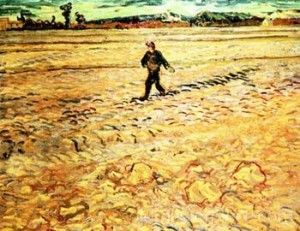 This is the first part of a three-part series on the parable of the sower, focused on the version of that parable that appears in Mark 4. In the second installment I will give my analysis of the parable itself, and in the third I will share some lessons I think the parable has for us.
This is the first part of a three-part series on the parable of the sower, focused on the version of that parable that appears in Mark 4. In the second installment I will give my analysis of the parable itself, and in the third I will share some lessons I think the parable has for us.
To understand the parables of Jesus is crucial for anyone seriously interested in knowing what Jesus taught during his time on earth, since the New Testament gospels are the main documents that preserve the teachings of Jesus, and parables make up a large portion of these teachings – about thirty-five percent in the synoptic gospels (Snodgrass, 22). Jesus was clearly a teller of parables, so any student of Jesus’ teachings needs to come to terms with the parables. For people in UBF, understanding the parables takes on additional significance since the gospels make up the bread and butter of our theological understanding. Sunday sermons and correlated Bible studies typically move passage-by-passage through a book of the Bible, and the general pattern of book selection in many UBF chapters takes one of the gospels, then another OT or NT book, and then back to another of the gospels, alternating between a gospel and other books of the Bible. Knowing, then, what Jesus’ parables are supposed to be doing can only help us as we seek to follow him.

Last 30 Comments